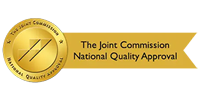Family relationships can have a profound effect on mental health, behavior, as well as the physical heath of a child. Parental attachment, for example, is predictive of numerous developmental outcomes in children, such as general well-being, self-esteem, social competence with peers, problem-solving abilities, academic success, behavioral outcomes, resilience, and more.
There is empirical evidence that substantiates the formative interrelationships between attachment and child psychopathology, inflammation and health, neurobiology, school readiness and empathy, compassion, and altruism.
In 2001, the Report of the Surgeon Generals’ Conference on Children’s Mental Health first identified family involvement as a guiding principle to improve children’s mental health services and outcomes.
Family Therapy Basics
Family therapy is a structured form of psychotherapy that is intended to initiate change and reduce distress and conflict by “improving the systems of interactions between family members.” The role of a family therapist is to facilitate conversations that act as catalysts to strengthen and improve existing connections between family members. Family therapy is based on family systems theory, which is a theory of human behavior. Family systems theory views the family as a living, complex social system, rather than the sum of its individual members. Family therapy uses systems theory to evaluate family members in terms of their position or role within the family system. Instead of attributing a problem to a single family member, in family therapy, problems are treated by addressing and shifting the way the entire family system functions. Although there are a variety of family therapy techniques that may be effective, the commonly used models include structural family therapy, intergenerational family therapy, strategic family therapy, and systemic family therapy.
Benefits Of Family Therapy
Family therapy can be helpful in any family situation that causes stress, anger, grief, and/ or conflict. Family therapy can illuminate and correct dysfunctional family patterns and work to disintegrate unhealthy family dynamics. Through family therapy, family members have an emotionally safe environment to address specific issues that may be interfering with the functioning, cohesiveness, and/ or health of the family unit. Family therapy promotes understanding and collaboration among family members. It can improve communication skills, increase family cohesiveness, and strengthen family relationships. When family relationships are stable and supportive, they can have positive effects on one’s mental health, as they can provide resources that can help a family member learn to cope with stress, engage in healthier behaviors, and cultivate improved self-esteem.
Further Information and Support
For most of us, life can be very stressful, leading us to feel emotionally charged, which can cause anxiety, panic attacks, depression, and getting stuck in a cycle of being burdened with negative thoughts. Navigating through the challenges and emotional turmoil of life can be overwhelming, but you do not have to go through it alone. Engage Treatment is a Joint Commission Accredited professional psychological practice. We specialize in treating children, teens, and young adults struggling with depression and anxiety through community-focused treatment plans that incorporate a carefully selected combination of therapeutic interventions. Our compassionate, multidisciplinary practitioners are devoted to providing the highest quality of care that helps ignite positive change and enables clients to reach optimal health and well-being. Please do not hesitate to reach out for guidance. We are happy to answer questions and provide you with any additional information. Feel free to call us at 805-497-0605 or email us at [email protected]. You are also welcomed to get in touch by filling out our contact form. We look forward to connecting and having the opportunity to discuss how we might best be able to support you.
Contact Us
Westlake Campus:
IOP Program
2625 Townsgate Road, Suite 210
Westlake Village, California 91361
Agoura Campus:
Private Therapy & Parenting Program
30300 Agoura Road, Suite 250
Agoura Hills, CA 91301
805-497-0605
805-371-4862











© 2023 Engage Treatment Program, Inc. All Rights Reserved.
LGBTQ Friendly
About
• About Engage
• Our Team
• Career Opportunities
• Individual / Family Therapy






